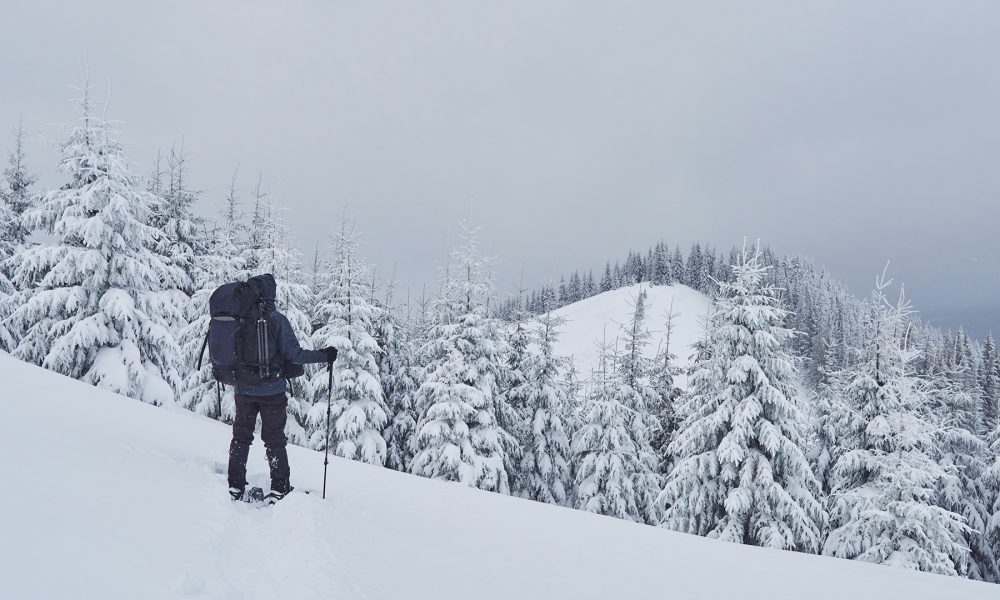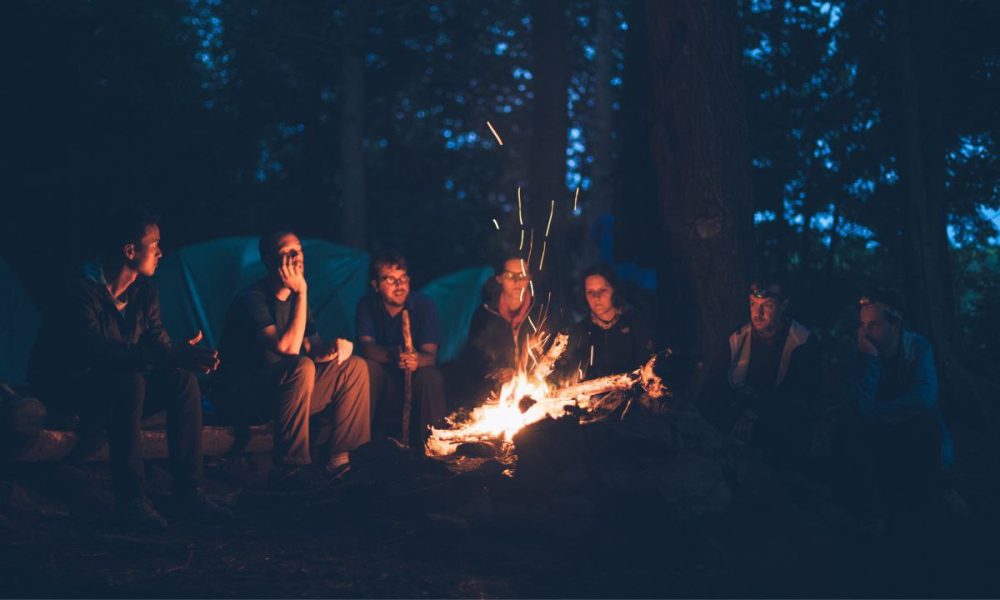It’s the Most Wonderful Time of the Year…To Suffer a Cold Injury
Recognition, Prevention and Treatment of Common Cold-Weather Medical Emergencies
By: Patrick Norton of ARTOS Survival
Right around this time of year, bears of all types are heading out into the wilderness to partake in their favorite winter sports. Be it hunting, skiing, snowboarding, snowshoeing, or snowmobiling, the risk of suffering a cold injury greatly increases in the late fall, summer, and early spring months. Bear in mind that snow and freezing temperatures are not required for one to experience a cold-related emergency. Even in warmer climates, especially in places such as the desert or at sea, where drastic temperature drops are common at night or during and after a submersion incident, hypothermia, frostbite, or non-freezing cold injury can also occur. This piece will serve to familiarize the reader with the signs, symptoms, and treatments of these common, sometimes deadly winter afflictions, as well as the importance of preparedness and proper training in recognizing and treating them early.
First, it is crucial to have a baseline understanding of the physiology of heat production and heat loss in the human body. There are three ways the body can produce heat on its own: resting metabolism, exercise, and shivering. When the body is given energy as food, chemical reactions take place to convert energy to power the mechanisms that keep it alive and allow it to work. One of these energy conversions is turning the potential energy in food to heat energy. This resting metabolic rate will increase a bit in cold conditions, but it does not provide enough heat to sustain life in winter weather. The second form of heat production is physical exercise. Exercise is a great heat producer, whether through short bursts of intense exercise or constant, moderate motion. Exercise does have some constraints and concerns, however, that need to be considered. Athletic ability, conditioning, stamina, and endurance, as well as the availability of energy in the form of food and water, are limitations for exercise. Sweat production is another concern associated with cold injury. These highlight the importance of physical fitness, acclimatization, proper nutrition and hydration, effective winter clothing and layering, and activity regulation, which will all be addressed later. The last physiological method of heat production is shivering. Yes, shivering is a mechanism for the body to create heat, not just a symptom of hypothermia. Shivering will be addressed more later in the hypothermia sections of this article, but essentially shivering is a response to a drop in core body temperature that creates heat at a rate of approximately five times that of resting metabolism. Again, this form of heat production is fed by food, water, and oxygen. Shivering also decreases dexterity, hindering the victim’s ability to perform essential tasks required to keep warm in the first place. This will bring us to the importance of preparedness and prevention of heat loss, but first, a crash course on the forms of heat loss.
There are four types of heat loss that occur in cold environments: conduction, convection, radiation, and evaporation. Conduction is heat transfer through direct contact, for example, body heat transferring to the rock one may be sitting on. Convection can be thought of as heat loss due to air passing over the patient. Radiation is the indirect transfer of heat from a hot to a cold object. Heat is also lost through evaporation, either by sweating or breathing. To maintain adequate body temperature, it is imperative that the outdoorsman mitigate heat loss from all three forms of heat transfer and evaporation. When this is combined with proper nutrition, hydration, and activity regulation, the chances of avoiding cold injury will greatly improve.
The most important thing to do to fight hypothermia and other cold injuries is to establish preventative measures to ensure it does not happen in the first place.
In order to be prepared, one must also carry the proper gear and supplies, research the area’s conditions, acclimate to the environment and make a solid plan for the trip and for possible emergencies. Also, before the wilderness enthusiast even leaves the house, he must train! This training includes learning effective and efficient wilderness living, survival, and medical skills such as camp, shelter, and fire building, camp cooking skills, proper wilderness layering, smart activity regulation, and wilderness first aid (WFA). All too often, many people go out thinking they know exactly what to do because they have either been hunting or snowmobiling for so long that they automatically have gained survival or medical skills through osmosis, or they have watched enough hours of YouTube to know it all. This is not the case! Assume you will not rise to the occasion when an emergency happens. In general, these are the people that get into critical situations or die, whether due to cold injury or something else. Take the time to learn proper skills. Teaching all of these skills is beyond the scope of this piece, but learning to make effective shelter and fire quickly, efficiently, and safely. Learn to properly layer and regulate exercise.
The most effective and easy way to layer is the modular, three-layer system. This includes a form-fitting, moisture-wicking base layer of wool or synthetic fabric; wool is preferred in the author’s opinion because it does not become stinky due to sweating. The second piece of this system is an insulating layer, also of wool or synthetic material. Down layers are acceptable only in dry cold. This layer should not be too tight; the idea is to hold heat in the negative airspace of the fabric. The final layer is a breathable, waterproof shell. Gore-Tex is preferred, but there are other materials that do the trick as well. The purpose of this layer is to protect the wearer from wind and water while allowing the other layers to breathe and expel any moisture that has built up. Do not forget to also wear warm headwear, footwear, and hand-wear. Do not over-tighten footwear, as this can inhibit circulation to the feet and toes. The following is a simple example of how to employ this modular system along with proper exercise management. Imagine a snowshoer wearing this three-layer system at the bottom of a fairly steep slope. The next step in the expedition is to get to the top. The wearer is fairly certain that he will create heat through the exercise required to get to the top, so he sheds his middle, insulating layer. He begins to climb but maintains a moderate level of exertion using a steady pace, following a switchback pattern up the hill rather than forging straight up the hill as fast as he can to mitigate sweat production, which could freeze or increase his chances of hypothermia or other cold injuries. If the hill climb is quite long, he can take frequent rests as he begins to feel himself start to sweat or overexert. Certainly, by the time he gets to the top, he will want to take a good rest, eventually donning the insulating layer again before cooling off too much. This is an easy-to-follow example, but it is important to be strategic and diligent, no matter how complex the scenario is.
In concluding the topic of prevention, adequately fueling the body is required to perform exercise and simple tasks and to power the metabolic heat production mechanisms addressed earlier in this article. Be sure food is consumed regularly, in proper amounts, and according to the intensity of activity. Remember, food intake should be increased in colder environments, whether intense exercise is involved or not. Carbohydrates are converted into kinetic and heat energy very quickly, which is likened to tinder in fire building. Fats and proteins will provide more sustained energy, comparable to larger pieces of firewood. Lastly, proper hydration is of the utmost importance to prevent not only heat injury but cold injury as well. It allows for adequate perfusion to supply oxygen and nutrients to the cells and to circulate warm blood to the vital organs and extremities. Pre-hydrate before activity and hydrate often during activity. Make sure to have electrolytes available so the body can absorb the water it is supplied. Under normal circumstances, food provides the body with enough electrolytes, but under strenuous activity, the rule of thumb is one liter of electrolyte replacement for every two liters of regular water.
If these measures fail, cold injuries may happen. There are different types of cold injuries, and each has different levels of severity. Cold injury may also occur in conjunction with other injuries. This is why in a wilderness setting, the primary patient assessment not only includes airway, breathing, and circulation assessment and intervention but spinal disability and environmental measures as well. It is recommended to take a WFA course, at minimum, to learn to properly carry out a patient assessment, which every patient deserves. The first type of cold injury is hypothermia.
The key to treating hypothermia is to recognize the signs and symptoms early and treat them immediately.
The signs and symptoms of hypothermia vary depending on severity. These include shivering, goosebumps, loss of fine motor function, stiff extremities, clumsiness, poor decision-making, and confusion for mild hypothermia. When these symptoms increase and the patient begins to become more uncoordinated, including an altered gait and falling, and begins presenting signs of obvious mental status changes, the patient is considered to have moderate hypothermia. These symptoms are often called “the umbles” or stumbles, fumbles, and mumbles. To treat mild and moderate hypothermia, dry the patient, dress him in warm clothing, move him to a warmer location protected from wind, and encourage movement if possible. In moderate cases, the patient may need to be put in a sleeping bag with an insulating pad between him and the ground. The patient should be given warm drinks with plenty of sugar if he can swallow. The caregiver should also put hot, but not scalding, water bottles or chemical heat packs on critical places such as the torso, back, armpits, and groin, with a layer of clothing in between. Once the patient is warmed, he may begin to have solid food such as candy or energy bars progressing to full meals with fats and protein. Fires with a reflector wall or space blanket will also help rewarm the patient. Most times, rewarming a mildly hypothermic patient can be done in the field, and the patient may continue the trip once ready. In moderate cases, this becomes more difficult but can still be attainable. Keep in mind the rewarming process may take a long time and may not always succeed in the field. Be persistent and do not allow for any more heat loss.

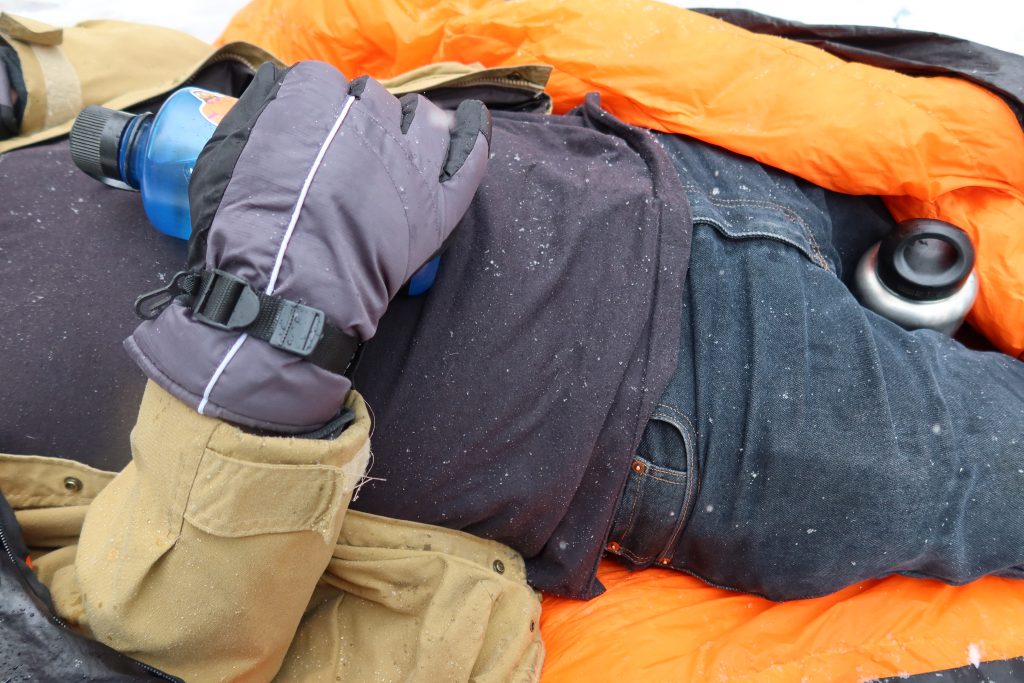
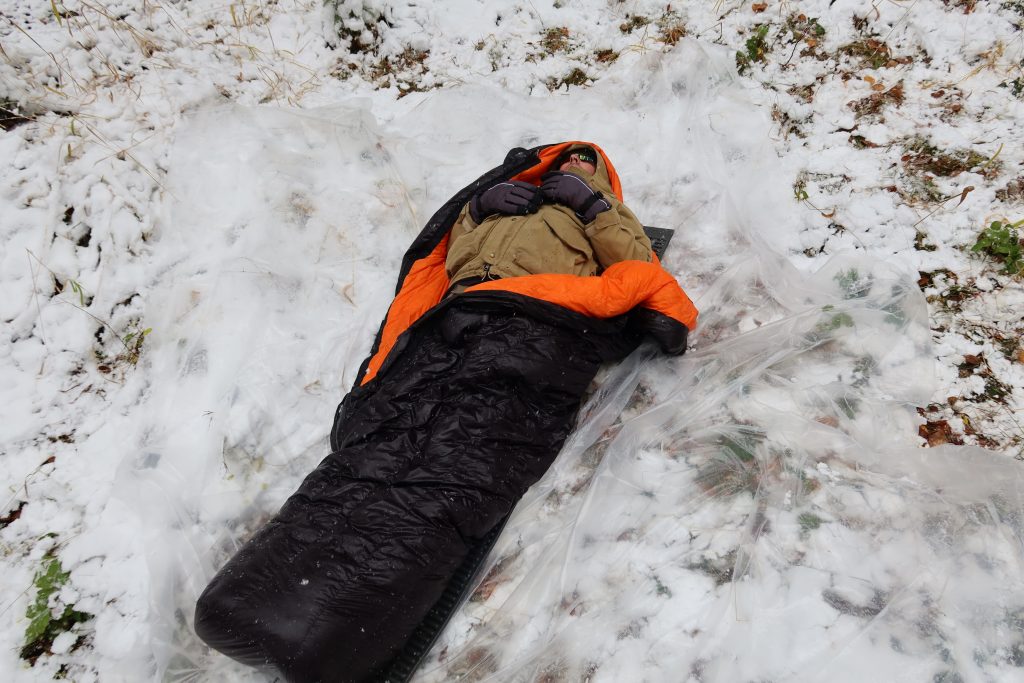
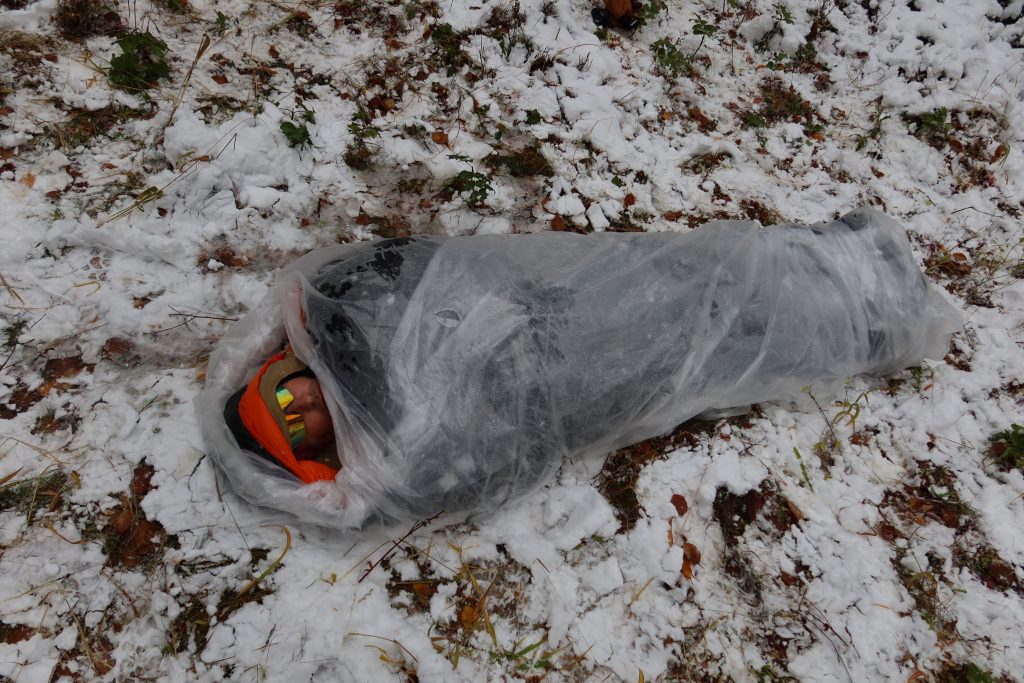

If hypothermia progresses, the patient may stop shivering due to energy depletion and show a profound decrease in mental status, muscle rigidity, and lowered heart and respiratory rate. This is severe, or profound, hypothermia, a life-threatening condition. The patient likely will not be able to swallow, so giving warm drinks and food will not be possible. In cases of moderate or severe hypothermia, the patient should be put in a hypothermia wrap (hypo-wrap) or “hypo-burrito .”Many useful modifications can be made to improve the hypo-wrap, and it can be viewed online or learned in a wilderness medicine course. However, the basic principles of the hypo-wrap remain the same in all iterations. Begin by heating water bottles or activating chemical heat packs. Lay the patient down on a large, waterproof sheet, such as a plastic tarp or drop cloth. Put the patient in at least one sleeping bag or wrap them in blankets with an insulating pad underneath. Place the bottles or heat packs in the critical areas mentioned above, including by the feet. Finally, wrap the patient in the waterproof sheeting tucking the edges under the patient to keep warmth inside the wrap. A cloth or scarf may be placed over the patient’s mouth to prevent evaporative heat loss. The photos in this article show how this should look. When handling this patient, be very gentle so as not to cause cold blood to circulate to the heart. This may cause a life-threatening heart arrhythmia. Keep in mind that the patient’s pulse and respiratory rate may be difficult to detect, so go slow with the assessment. If they are absent, CPR may be performed. However, when in doubt, give only rescue breaths. Due to the preservative nature of cold, the patient may appear deceased, but given in-hospital warming and resuscitation care, many patients do survive. Remember: “the patient is not dead until he is warm and dead.” In most cases of mild or moderate hypothermia, evacuation is generally not necessary, and the patient can be rewarmed and continue acting as long as their mental status returns to normal. With severe hypothermia and some cases of moderate hypothermia, the patient should be quickly and gently evacuated to a higher level of care.
Frostbite is a condition in which tissue, most commonly that of the fingers, toes, ears, nose, and cheeks, freezes locally. The fluids between the cells of the tissue freeze, causing damage from the friction between the ice crystals and constriction of blood flow due to blood clots in the blood vessels of the affected regions. Frostbite is categorized in much the same way that burns are. Superficial frostbite, also known as frostnip, affects the outer layer of skin, causing it to appear red at first, then grey or white and waxy. The patient may experience numbness, tingling, or pain. Partial-thickness frostbite affects the tissues underneath the outer layer. The signs and symptoms for partial-thickness frostbite are much the same as for superficial frostbite, but the outer tissue may feel hard and frozen, while the underlying tissue may be softer. Full-thickness frostbite, occurring deeper into the muscle tissue of the patient, will also have similar signs and symptoms to those of superficial and partial-thickness frostbite, but the outer and underlying tissues will feel hard and frozen. It is difficult to determine the severity of frostbite until after it is rewarmed, but the presence of blisters within 24 to 48 hours of rewarming may indicate a partial-thickness injury, while the absence of blisters may indicate full-thickness frostbite. The treatment of frostbite is mostly the same across the board when it comes to severity. The patient should be brought to a warmer place, and wet clothes and jewelry should be removed. The affected area may be rewarmed if there is no chance of refreezing. This can be done by skin-to-skin contact or sticking fingers in the armpits, but rubbing is not appropriate as this can cause more damage. Do not expose the affected area to flame or rub snow on it. Ideally, the injured area should be rewarmed by submersion in 99°F – 102°F water. This is best done in a hospital setting since a constant warm water supply is required. Under-thawing can result in further damaged tissue. A flush of pink indicates that rewarming is taking place, and blisters may form. This process will be very painful. Pain management measures, such as Ibuprofen, are appropriate here. After the area is rewarmed, use extreme care when handling the area, place padding between fingers and toes and wrap and protect the rewarmed part. Encourage the patient not to use the injured body part. Quickly evacuate any person with frostbite, being gentle with the injured area. It is imperative to avoid rewarming if the chance of refreezing is high during evacuation. Preventative measures for frostbite are similar to those of hypothermia, with the addition of being especially careful to cover at-risk body parts and not touching frozen, metal objects. Frostbite is generally not life-threatening but can lead to loss of function and even amputation. Remember, it is easier and safer to stay warm than to treat a cold injury.
The final injury that will be addressed is a non-freezing cold injury, commonly known as trench foot. Trench foot is caused by prolonged exposure, usually in the feet, to cold, wet conditions, resulting in a lack of blood, oxygen, and nutrients to the extremity. The symptoms of trench foot include swollen, cold, painful, white or gray, shiny or mottled feet. Pain, numbness, or tingling may occur. Capillary refill may be slowed. This can be tested by pressing fingers on the affected part and watching the color return to the area. This should take less than two seconds. In severe cases, blisters or gangrene and long-term disability may develop, as well as the need for amputation. If the patient experiences any numbness or tingling, be suspicious of developing a trench foot. Treatment of trench foot involves rewarming the affected area at room temperature, elevating the affected body part, and bed rest to avoid further trauma. Avoid trench foot by being very diligent in keeping your feet dry and warm. It is important to dry and change socks frequently, avoid over-tightening footwear, sleep with warm, dry feet and pay special attention to the needs of your feet, examining and massaging them at regular intervals. Sometimes getting wet, cold feet is unavoidable, but care should be taken to keep them as dry as possible by using terrain to your advantage and the proper equipment, including plenty of thick wool socks and galoshes or waterproof boots with gaiters. In general, non-freezing cold injuries do not require evacuation.
Although not exhaustive, this article will give the reader an informative introduction to understanding, recognizing, and treating some of the more common cold-related injuries that may occur during outings in the wilderness. The most important takeaway should be that preparedness and prevention are the preferred and safest methods for addressing these conditions. Proper research and training are encouraged before heading out into the wild. The author believes that it is incumbent upon everyone who works or plays outdoors to take a two-day wilderness first aid course to prepare for their next trip. Visit artossurvival.com for more details on WFA and survival courses in Northwest Montana, or find an instructor near you. Stay warm out there!
